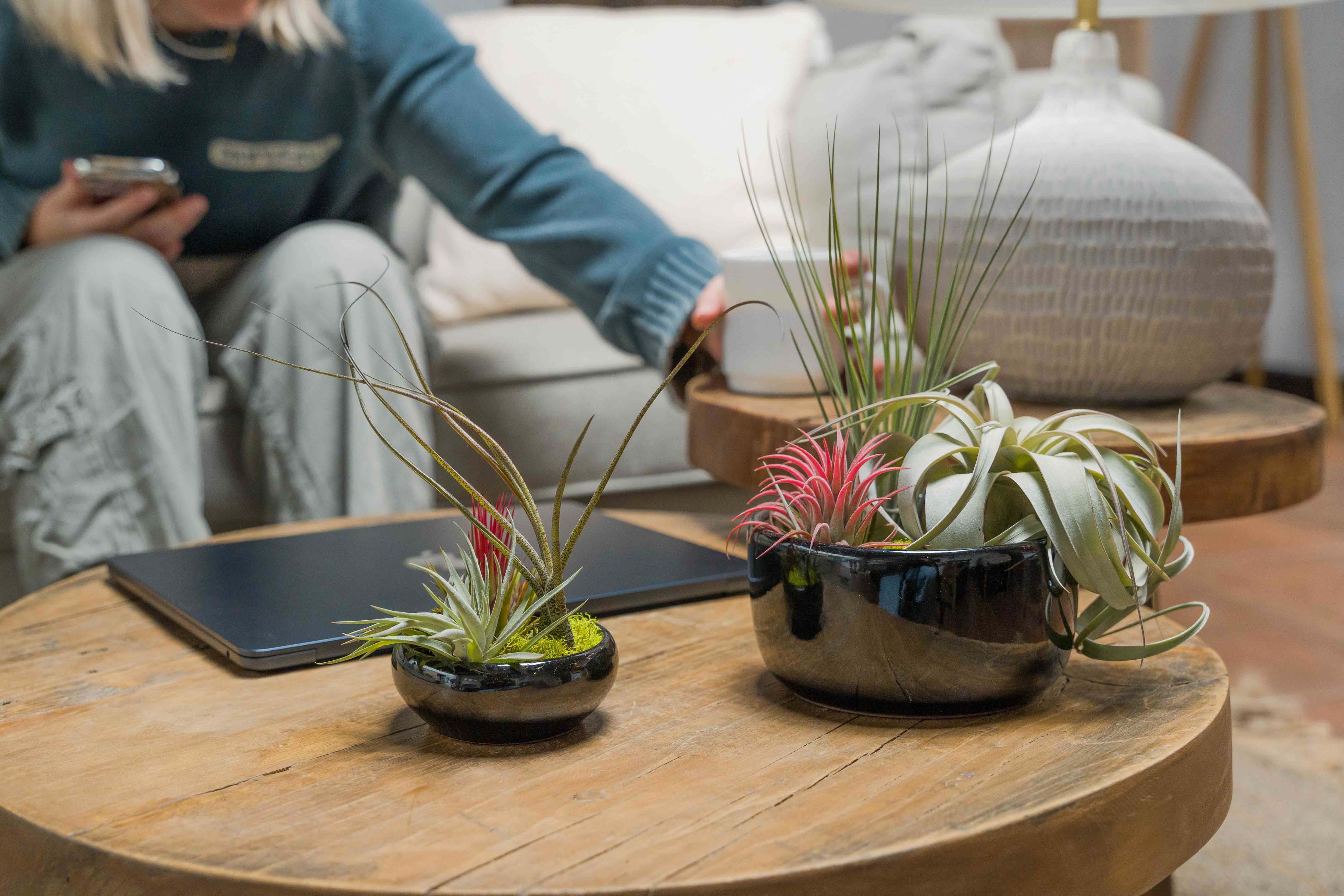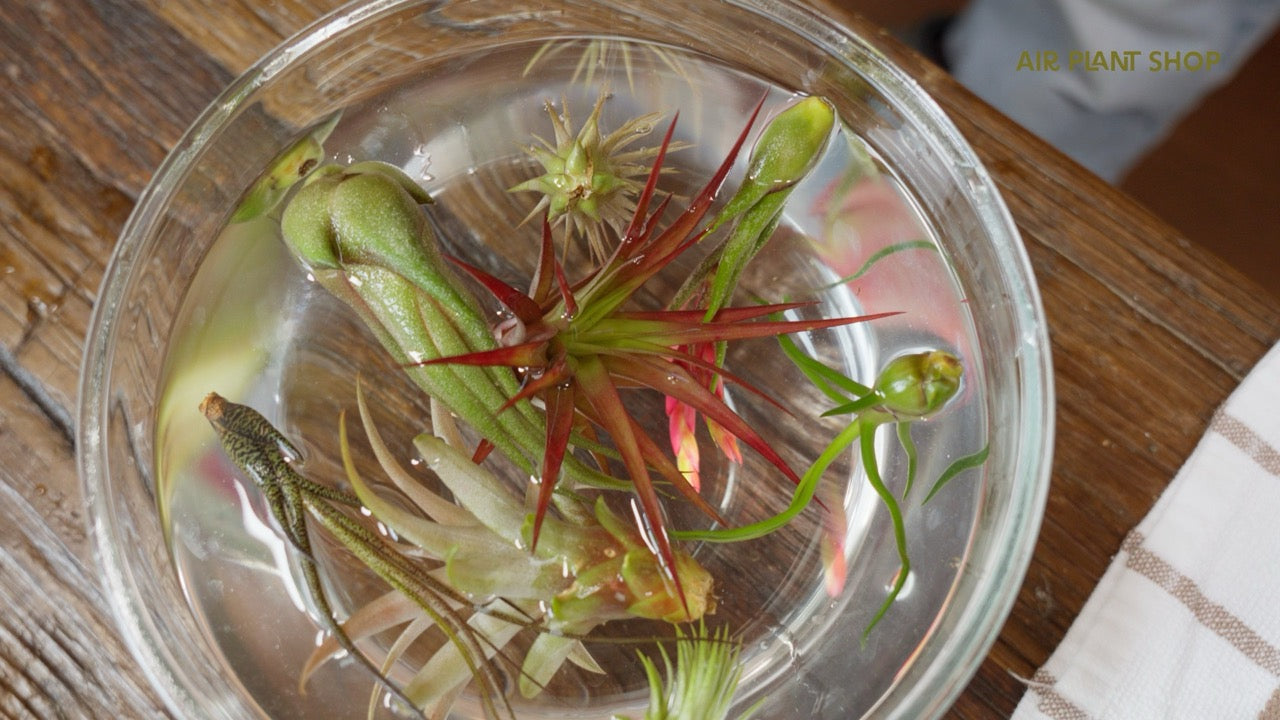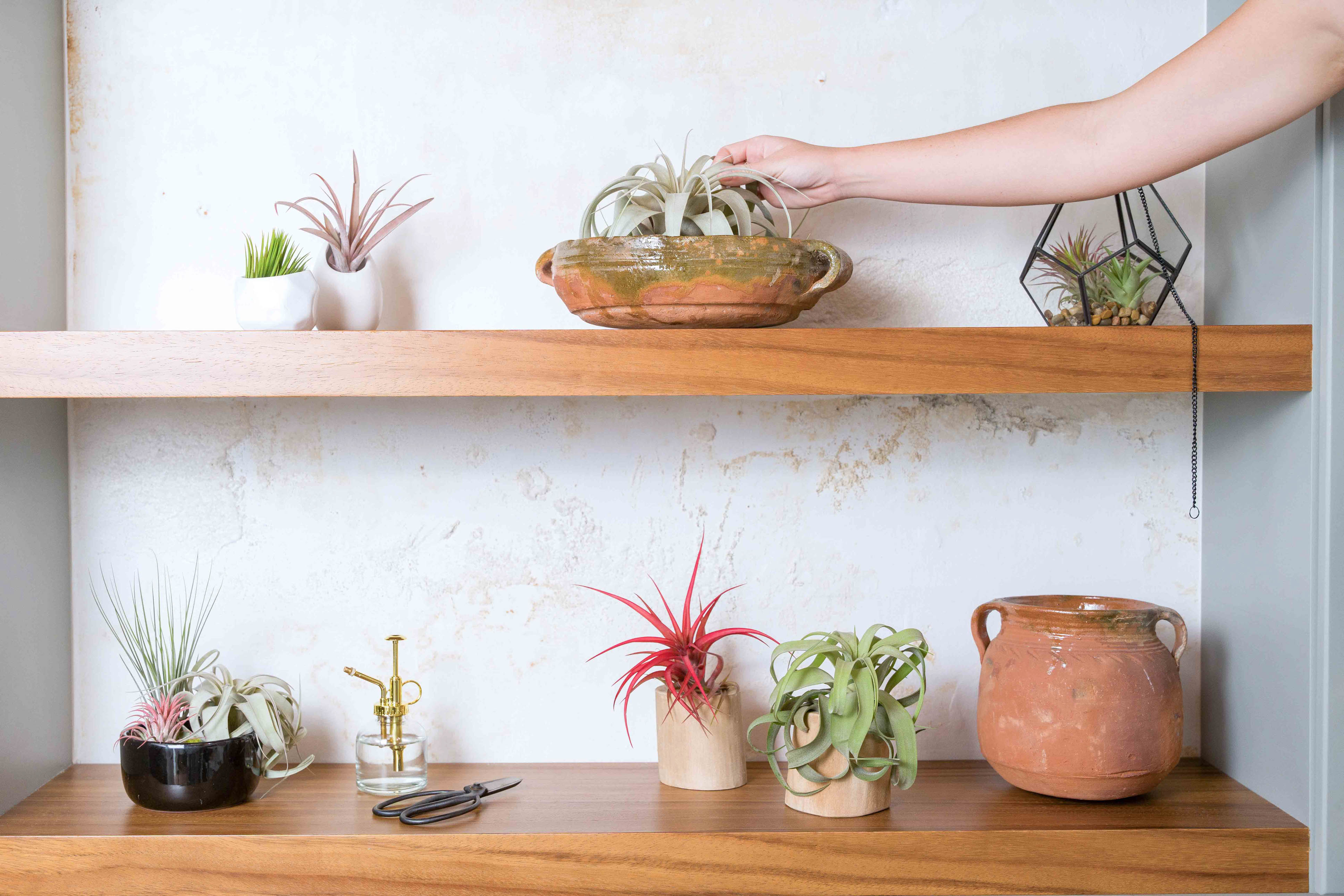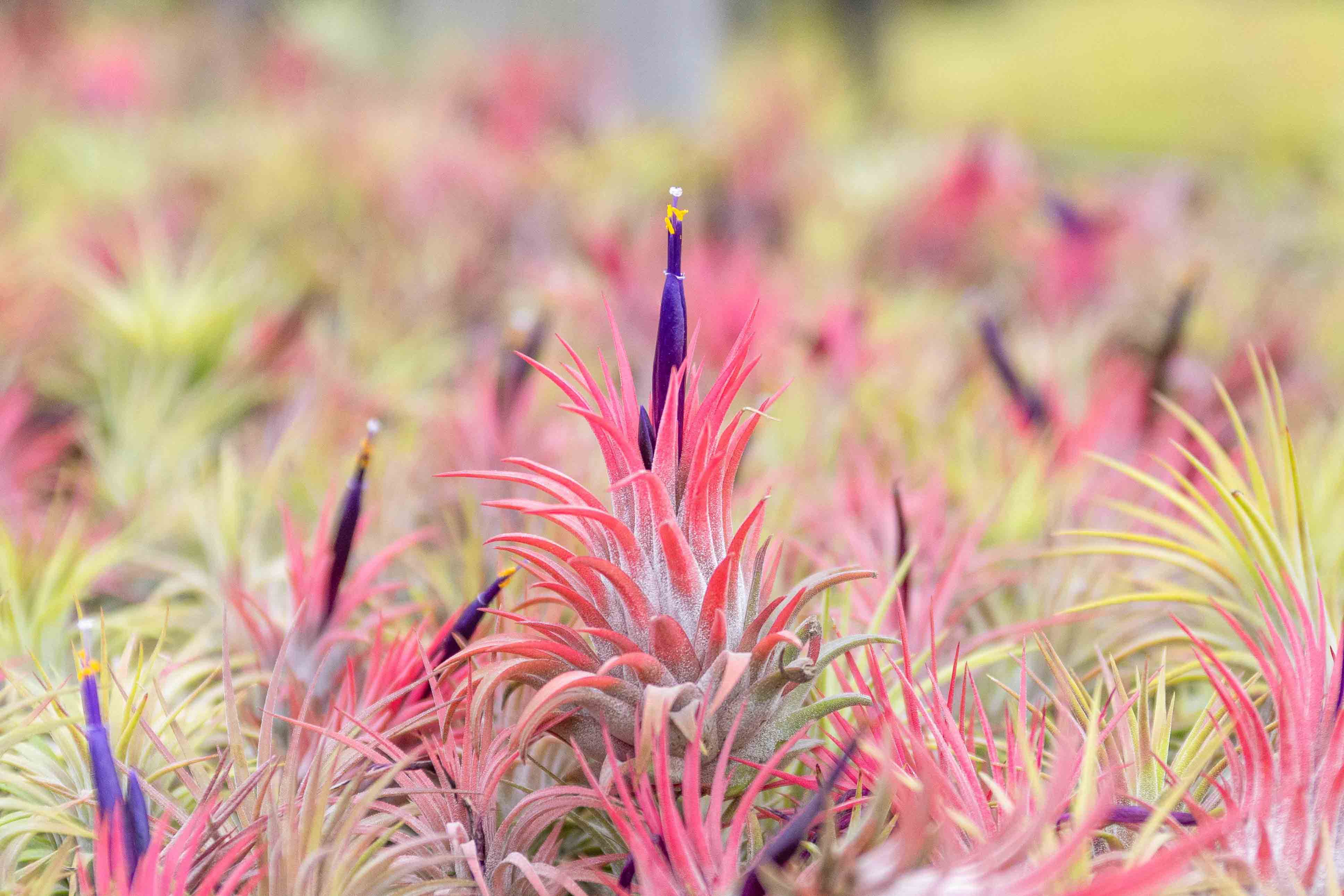Along with their unique physique and robust blooms, Tillandsia air plants are favored among plant lovers due to their simplicity and low-maintenance care. However, once in a while air plants do require additional care to keep their fresh appearance and ensure optimal health. Whether maintaining the leaves, removing unsightly roots, or pruning spent blooms, trimming your air plants is easy and only requires small scissors or shears and some basic air plant knowledge!
Maintaining Dead, Damaged, or Browning Leaves
As air plants mature or adapt to a new environment, they naturally shed their bottom or outer leaves as new growth forms. This is a normal process and does not necessarily indicate any health issues. If your plant has dead, decaying or dried-up leaves on the base, you can gently pull or peel them off without harming the plant. Not only does removing this dead plant matter help keep the plant beautiful, but it also helps the plant to regenerate and provides more light to the new growth! Additionally, old leaves can hold extra moisture after waterings which is more likely to cause rot in your air plant and, thus, death.

Use caution when removing leaves, as they may be providing shelter to a newly forming offset – also known as pup. In this case, it is best to leave the leaf until the pup has grown to at least one third of the mother plant. Want to learn more about air plant propagation and pup removal? Read our blog "Easy Propagation of Air Plants"!
You may have an air plant that has some bent, broken or damaged leaves. This is not uncommon for the delicate species and does not jeopardize their health! To mend the leaf, simply trim at an angle where it is bent or damaged – the angled cut will give the plant a more natural look. The same technique can be used for leaf tips that are browning. We often see this occur in plants with wispy leaves such as Ionantha as well as plants with aged leaves like the Streptopyhylla and Xerographica. Trimming the ends will not harm the plant but be careful not to cut too much of the healthy leaves! The plants need this surface area to absorb their nutrients. If you find your plants have a substantial amount of brown or dried tips, then this may be an indicator that they are dehydrated or are receiving too much direct sunlight. Check out our blog "What's Killing My Air Plants" to discover what could be harming your air plants and how to troubleshoot to resolve the potential issue!
Root Removal

Since air plants are epiphytes, they absorb nutrients from their leaves as opposed to their roots. The plants’ roots serve the sole purpose of anchoring them to their surroundings such as trees and rocks – they are not necessary for survival. If your air plant has visible roots then feel free to trim them off but avoid cutting into the base of the plant! You can also keep the roots to help the plant attach to a vertical display. Root removal is all about personal preference – do you like a more clean, maintained look or more natural?
Removing Spent Blooms
After you have enjoyed the beautiful blooms your air plants have produced, you may leave the dried flowers on the plant or remove them for aesthetic purposes. Again, up to you! To do so, you can either gently pull the dead blooms from the bracts or cut the bloom stalk close to the base. Removing the spike will help the plant to redirect its energy to create pups.










Leave a comment